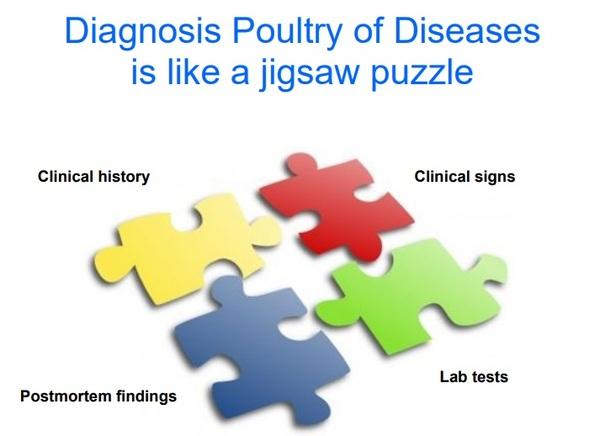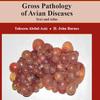The Art and Science of Diagnosis of Poultry Diseases

This topic is an interesting topic. History findings through owners, flock managers and supervisors is key to inroad into diseases diagnosis. Remember these animals don't talk but you must fix out presumptive diagnosis for further investigations and early treatment to avoid explosion of mortality. I will define disease in every host including man as a state of negative ease. In furtherance to quizzing the attendants dry, an experienced avian veterinarian is cap on the hand on prevalent diseases in the environment in question Viz a Viz Vertical and horizontal transmitted diseases in the environment, age dependant diseases within the environment. With all these his or her calculations on definitive diagnosis is getting close. Then clinical signs and some pathognomonic lesions help matters a lot to build up diagnosis. Further investigations might delay compound matters. Anyway this topic is only meant for field avian veterinarians. Thanks everyone for reading
Diagnosing poultry diseases can be an art. With closed housing systems with strict biosecurity protocols, the visit of the owner and a vet became need-based. Spotting a problem is based on the data collected. On the contrary, the poultry house attendant spends more time with the birds. A dedicated attendant can spot the disease much earlier than the owner or the vet.
Many poultry diseases/problems are age-specific. In most of the medium and large operations gave separate brooding growing and laying operations in different houses or different premises. Poultry attendants should be allocated with one house for a long time. his observation is more crucial and faster than the owner or the vet.
Taking the example of I.B.D (Gumboro), the disease strikes mostly between 21 and 28 days. A keen attendant can spot sick birds during that age. His prompt reporting is more crucial than the post mortem and laboratory diagnosis.
Coccidiosis is seen more on deep litter and rare in cages. The disease is mostly seen after 4 weeks and before 16 weeks. observing dull birds off fed and bloody droppings is faster than post mortem or the lab.
Water shortage and feeding delays cause much more damage in layer flocks by way of production drops than disease many a times. An alert attendant can diagnose and prevent the problem. Observation on the place of of dead birds in a house pecking are spotted first by the house attendant much earlier.
If the house attendant does not pay attention and misleads the owner and the vet, the diagnosis in poultry can remain a mystery.
I compliment the author for good analysis, diseases have negative impact on the performance of poultry flocks, the pathologist should have holistic approach in differential diagnosis of poultry health problems.
The definite etiological agents such as Bacteria, Virus, Fungi, and Parasitic infections are well known, but the diagnosis of problems arise from managemental, nutritional and other non infectious causes require skill. I give a classic example of occurrence of coccidiosis in some batches of chicken of same age and same feed. It was a big task to diagnosis. we need to apply our mind here. I visited their feed mill in which they were manufacturing feed on two shifts -day and night. When we analyzed the feed manufactured on night there was outbreaks rather than day time manufacturing feed. This is because of frequent power failure in night time and improper mixing of coccidiostats in the feed. Here we need common sense in diagnosis of such problem. Therefore, the diagnostician should have a holistic approach.
It is an excellent and short review of diseases diagnosis and you explained it as an expert clinician. In my experiment some diseases are strongly management dependent for example a wrong light program in a layer flock can cause a before peak collapse or post peak dip, and it can be defined as an infectious disease like IB or ND. understanding the real cause needs a long time and good knowledge about poultry biology and light.
I mean it is a complex process to diagnose interference of management and infectious agents and to prevention first needs to correct management item or distinguish them from infectious agent.
Managing poultry diseases needs an expert veterinary practitioner to a jigsaw puzzle.
Thanks so much for your good explanation.
Excellent summary, Dr. Aziz. Would you be able to expand on what do you think would be the role(s) of NGS, or more specifically, of random metagenomics analysis on avian disease diagnostics?
Dear all participants,
Hello as disease diagnose is not simple method as it is understood. Basically, we have to practice it for a long time then we able to recognize disease precisely. Some keys point we should keep in mind as follow:
1) Age, it is key thing for diagnose of any disease like infectious diseases.
a)For example in broiler within in first week we observe like Omphlitis, Yolk sack infection, New castle, Infectious bronchitis, Avian influenza, Pullorum disease, Subclinical Infectious bursal disease etc
b) Within second week we observe Avian influenza, Salmonella, IBD, etc.
c) Within third week we observe HPS, IBH, IBD, etc and soon
2) Feed Intake/day, especially this is most important in laying birds like FLHS, CRD, CCRD, etc
3) Production rate or Body weight, as in laying birds or meat the birds production or growth decline due to any infection.
4) Bird behaviour, Is also a key point to understand of susceptibility of any disease.
5) Physical appearance, also give a sign of any infectious agent.






.jpg&w=3840&q=75)












.jpg&w=3840&q=75)